1. Network
1.1. Consultants
1.1.1. Dolmen
1.1.1.1. sean mcnulty
1.1.2. Innovator
1.1.2.1. kevin mcquire
1.1.3. Raymond Turner
1.1.4. bfk
1.1.5. Deep Water
1.1.6. Vision Consulting
1.1.7. 4thOption
1.1.8. Innovation Delivery
1.1.8.1. Keith Finglas
1.1.9. Innovation Foundation
1.1.9.1. Peter Robbins
1.1.10. Servitize
1.1.10.1. Aidan Kenny
1.1.11. Product Innovator
1.1.11.1. Mary Ryan
1.1.12. Radarstation
1.1.12.1. Ré Dubhthaigh
1.1.13. John Fahy
1.1.14. Articulate Consulting
1.2. EU
1.2.1. Europe INNOVA
1.2.1.1. Innovation Management
1.2.1.1.1. Im3prove
1.2.1.2. services innovation
1.2.1.2.1. European Innovation Platform for Knowledge Intensive Services (KIS-IP)
1.3. Education
1.3.1. NUIM
1.3.1.1. BSc honours degree in Product Design
1.3.1.1.1. Damini Kumar
1.3.2. Sligo IT
1.3.2.1. Centre for Design Innovation
1.3.3. IMI
1.3.3.1. Dip Strategy and Innovation
1.3.4. WIT
1.3.4.1. RIKON
1.3.4.1.1. Innovation, Knowledge Transfer and Organisational Networks
1.3.5. FSIC
1.3.5.1. Financial Services Innovation
1.3.6. UL
1.3.6.1. Financial services marketing
1.3.6.1.1. Dr. Deirdre O'Loughlin
1.3.6.2. Service economy
1.3.6.3. ethnographic research
1.3.6.3.1. Fahy, Maurice Patterson
1.3.7. NUIG
1.3.7.1. service scripting
1.3.7.1.1. Dr. Aidan Daly
1.3.8. Innovation Value Institute
1.3.8.1. IT Value
1.3.8.2. IT Capability Maturity Framework (IT-CMF)
1.3.9. UCD
1.4. Associations
1.5. Business Support(NFP)
1.5.1. Enterprise Ireland
1.6. Events
1.6.1. "Service Design Thinks"
1.6.2. Global Service Jam Dublin
2. Services Marketing
2.1. Understanding Customer requirements
2.1.1. Market research
2.1.1.1. ethnographic research
2.1.1.2. behavioral research
2.1.1.3. observation
2.1.2. User Insights
2.1.2.1. Shadowing
2.1.2.2. Observing
2.1.2.3. Questioning
2.1.2.4. Service Safaris
2.1.2.5. "Day in the Life"
2.2. Aligning Service Design and standards
2.3. Delivering and Performing Services
2.4. Managing Service promises
2.5. Service and the bottom line
2.5.1. Business Model Innovation
3. Innovation Dimensions
3.1. Innovation Organisation and Culture
3.2. Innovation lifecycle Processes
3.3. Enabling Factors
3.4. Innovation Results
3.5. Innovation Strategy
4. New Service Design
4.1. Services Vision / Strategic Intent
4.2. Service Identification
4.3. Service Value Net Formation
4.4. Service Modelling
4.5. Service Implementation
4.6. Service Commercialistaion
5. Market research
5.1. Real Insights
5.2. Amarach
5.3. Eolas
5.4. Market research Ireland
5.5. Empathy
6. Innovation process
6.1. Experienced Facitilators
7. innovation strategy needs to aligned with overall company strategy
8. Tools
8.1. Ideation
8.1.1. Diversity
8.1.1.1. Multidicplinary Design Teams
8.1.1.2. Intra-diciplinary design
8.1.2. What If?
8.1.3. Brainstorming
8.2. Visual Thinking
8.2.1. Post-it
8.2.2. Drawings
8.2.3. Storyboarding
8.3. Prototyping
8.3.1. Napkin
8.3.2. Elaborated Canvas
8.3.3. Business Case
8.3.4. Field Test
8.4. Story Telling
8.4.1. Talk and Image
8.4.2. Video Clip
8.4.3. Role Play
8.4.4. Text & Image
8.4.5. Comic Strip
8.5. Scenarios
8.6. Mindmapping
8.7. Service Blueprints
8.8. Innovation assessments
8.8.1. IMP³rove on-line self assessment tool
8.9. Services Marketing - Understanding Customer
8.10. Insight tools
8.10.1. User Journeys
8.10.2. Empathy Map
8.11. Net Promoter Score
9. Associations
9.1. Marketing Institute
9.2. Service Design Network
10. Policy
10.1. policy framework aiming at better supporting innovation in services
10.1.1. innovation in the services sector does not depend as much on the stock of accumulated capabilities as innovation in manufacturing. This may have strong implications for economic development and innovation policy, as modern economies may be able to grow faster and leap-frog by investing in services.
10.2. Services Directive
10.3. Competency Centre
10.3.1. Service Clusters
11. Public Sector
12. Companies
12.1. KIBS(Knowledge Intensive Based Servcices)
12.2. Organisational Requirement
12.2.1. Growth Orientation
12.2.1.1. Long term rather than short term profit
12.2.2. Organisational heritage
12.2.2.1. understand value of Innovation
12.2.3. External vigilance and opportunities
12.2.3.1. Porters 5 forces
12.2.4. cross functional cooperation
12.2.5. open innovation
12.2.5.1. open to external ideas and technology
12.2.6. space for creativity
12.2.6.1. people need headroom for creativity
12.2.7. diverse skills
12.2.8. strategy
12.3. Skills
12.3.1. Workforce
12.3.1.1. creative thinking
12.3.1.2. comminication
12.3.1.3. problem solving
12.3.2. Management Skills
12.3.2.1. Innovation Management
12.3.3. Idea Management
12.4. Culture
12.5. Innovation Strategy
12.6. Structure
12.6.1. Avoid another silo
12.7. Develop "champions"
13. Company Inhibitors
13.1. lack of qualified personnel
13.1.1. interternal champions
13.1.2. qualified consultants
13.2. Cost
13.2.1. can save companies money and resources
13.3. awareness
13.4. Structure
13.4.1. Where does it fit?
13.4.1.1. Specific team
13.4.1.2. Skills rolled out across all teams
